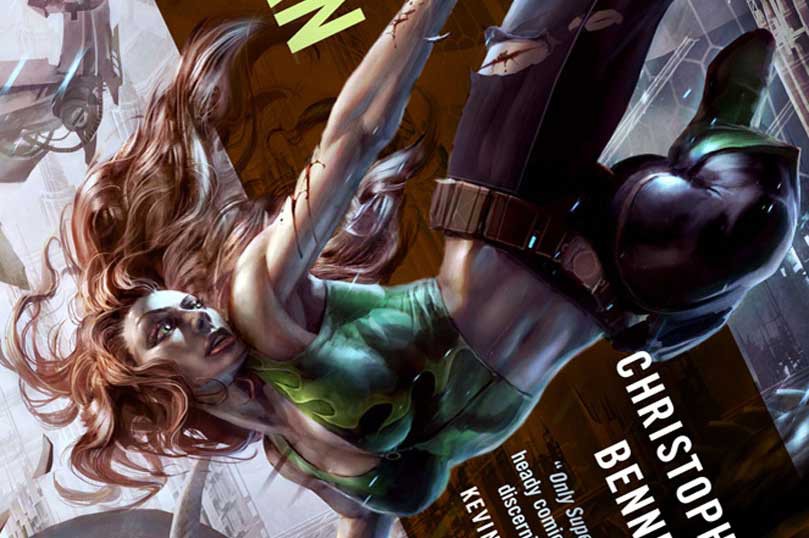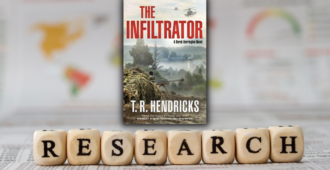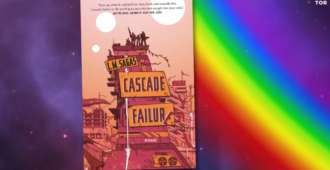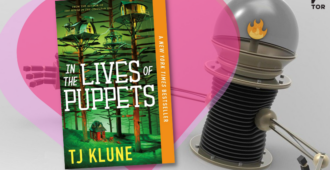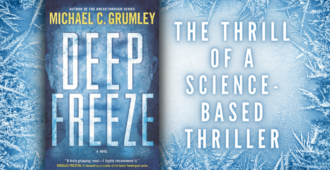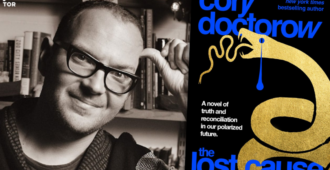The Ingredients of a Hero
Written by Christopher L. Bennett
In the months since I sold Only Superhuman, I’ve been told more than once that what I set out to do in the novel—approaching the concept of superheroes from a plausible, hard-SF perspective—was a new and unexpected approach. That surprises me. After all, the “super” part is easy. We’ve already got Olympic sprinter Oscar Pistorius and his prosthetic legs that make him better, stronger, faster. We’ve got prototype robotic exoskeletons to let soldiers exert seventeen times their strength, and adaptive-optics laser surgery to give people better than normal vision. Imagine what we’ll have in 95 years.
And the “hero” part isn’t that implausible either. Look at firefighters. Look at the ordinary people at the Dark Knight Rises theater shooting who held the doors for others to escape. Heroes are just people who set aside their own self-interest to protect others.
This is why the career heroes of Only Superhuman are called Troubleshooters. When I developed the idea over two decades ago, there were two TV personalities who used that label. One was MacGyver; the other was a local-news consumer advocate who helped people get justice or compensation for fraud and incompetence from local businesses. So to me, “troubleshooter” denoted someone whose purpose was to help others solve their problems. That was the side of superheroics I wanted to stress. I see too many superhero tales, especially in movies, that dwell on origin stories or personal vendettas and overlook the coolest part, the rescues and lifesaving and, well, the actual hero stuff. To be sure, the events of Only Superhuman are deeply personal for its heroine Emerald Blair, the Green Blaze. She’s struggling to define herself, wrestling with her past, and frequently fighting for her life. Yet there’s always something more at stake than herself. Every battle Emerald wages is on some level informed by her need to protect others.
Granted, it’s partly the colorful costumes, nicknames, and melodramatic trappings that make superheroes feel like fantasy to most people. But there are real precedents for those as well, in sports and celebrity culture. There’s also the current “real-life superhero” movement—mostly just eccentrics looking for their fifteen minutes of fame, but sometimes there are nobler motives at play. There’s a woman calling herself “Terrifica” who patrols bars in a sexy superhero costume to distract potentially predatory males from targeting women who’ve had too much to drink. It’s risky, perhaps a little irrational, but at least she’s sober and prepared (she carries pepper spray). I also once heard about a Mexican luchador who used his fame and masked anonymity to speak out against government corruption without endangering his loved ones. Maybe not as epic as punching out animal-themed psychopaths or fending off alien hordes, but just as heroic in its way.
These real-world champions also reflect the principle that guided Christopher Nolan’s Batman: the symbolism of the costumed identity as a way to affect hearts and minds, to inspire the innocent or intimidate the wicked. Terrifica shows how even the sexuality of the superhero image can be a source of power and influence if wielded properly—a theme that definitely comes into play in Only Superhuman.
The Troubleshooter Corps embraces the trappings and celebrity of comic-book heroes for the same practical reasons. The transhuman “mods” of the Asteroid Belt, with few historical role models to guide them, have looked to the superheroes of lore—and sometimes the supervillains—as their foundation myths. The Troubleshooters draw on that mythology to win the trust of the Belt’s fiercely independent peoples in a way they never could if they presented themselves as a transhuman paramilitary force.
But that’s the paradox of the Troubleshooters. On the one hand, they’re about personal image and charisma. Emerald Blair certainly has all the trappings of the classic superheroine—the red hair, the curves, the revealing fashion sense, the story of redemption for a checkered past. But the surface image is useless if the Troubleshooters aren’t genuinely effective at solving problems and saving lives.
…………………………
From the Tor/Forge October newsletter. Sign up to receive our newsletter via email.
…………………………
More from the October Tor/Forge newsletter:
- Big Smart Objects by Gregory Benford and Larry Niven
- The Secret World of Hardware Revocation by Cory Doctorow
- The Books in the Book by Tina Connolly
- Law School, Magic School by Max Gladstone
- Ghost Collection Sweepstakes

